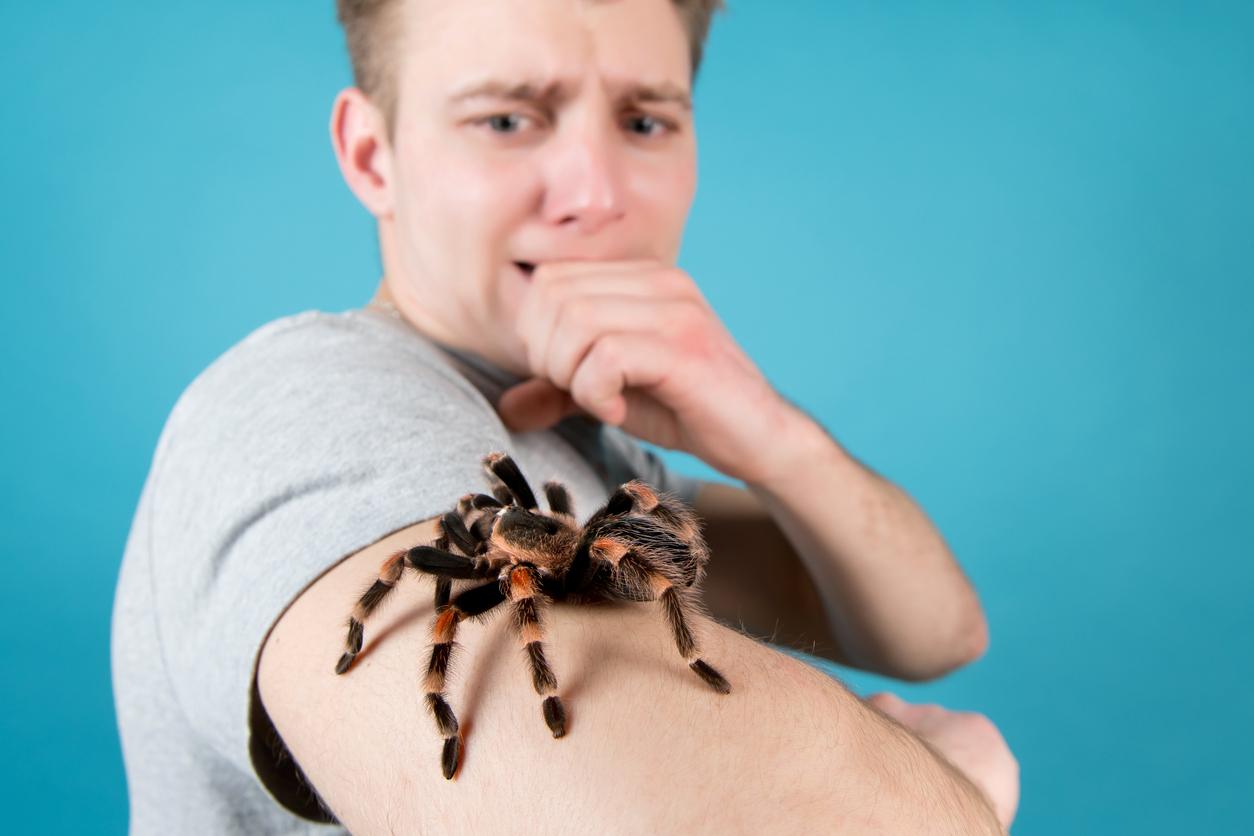The phobia, it is when an object or a situation, neutral at the start, is associated with an insurmountable anxiety reaction, resulting in a behavior of flight, avoidance or tetany. There are lots of them: fear of holes, fear of crowds, fear of small spaces, fear of spiders, mice…
Phobia is distinguished from simple disgust by the reaction it triggers in the subject, and by the vicious circle associated with it.Boris Charpentier, psychologistexplains how it manifests itself and how it can become paralyzing.
How is the phobia expressed?
Coming face to face with your phobia can be expressed in different ways. The exhibition leads dtwo types of reactions: cognitively and physiologically. “We have the heart which accelerates, we sweat more, we tense up, we can have nausea too”, he illustrates. The mind is assailed by irrational thoughts which “give the impression that one is facing an imminent danger of death”.
Phobia is often associated with a vicious circle
Phobias seem insurmountable, and Boris Charpentier explains why. A fear becomes a phobia partly because it is not confronted, we will tend to maintain it and let it spread in our lives. Faced with a phobia, the patient will tend to run away from it, avoid it or become paralyzed, “In fact, there is a negative reinforcement. In the short term, you feel relieved by fleeing the object of your fear, but this anchors your fear even more deeply because you cannot find means of confronting it, of defending oneself. The more one avoids a situation, the more one has the impression that it is extremely dangerous (much more than in reality)”, he points out. Especially as avoidance tends to become more generalized, more and more things related to phobia will enter the phobic spectrum.
Where can our phobias come from?
Phobias do not have a single cause. They can be explained by different factors: “a genetic variant, in particular for animal phobias, which certain studies point to as being “prepared phobias”, namely phobias designed to protect the human species”, he begins. They can be the result of trauma. For example, I get on a boat and the crossing goes extremely badly, which terrifies me of the boat in general. But this is not systematic. Other schools see them as a means of concretizing a more vague fear, which comes to be anchored on a concrete phobic object, which would be easier to fear than the real underlying fear.
Cure a phobia or choose to live with it
The phobia is not a fatality, it is possible to cure it. Several methods allow it, such as hypnosis for example. Or the technique of EMDR eye movement desensitization and reprocessing. Its principle, Boris Charpentier explains it: “It’s about desensitizing and reprocessing information via eye movements. We move our eyes in the same way as during the paradoxical sleep phase, the one where we dream, which precisely allows our brain to digest the accumulated information. The goal in using this system is to suppress the emotion that accompanies the phobia and reclassify it elsewhere in the brain.”
Another option, cognitive and behavioral therapies, which will become more grounded in reality. This time, the objective is to accompany the patient towards his phobia, to give him the keys to understanding and relaxation in the face of the phobic object. “In this case, the patient is exposed to what is called a scale of fears, by involving their imagination of the phobic object, by putting them in front of images and then in a real situation”, he specifies.
At last, psychoanalysis or psychotherapy can make it possible to treat the phobia, it will take more time but will come to analyze the origin of the latter by understanding where it originates.
This Tuesday, May 25, Top Santé will be a partner of the program Enquête de santé “Phobies, anguish, stress… The promises of new therapies”, broadcast on France 5 at 8:50 p.m.:
Read also:
- Obsessive-compulsive disorder: a drug created by artificial intelligence
- Scared of spiders? Spider-Man could be the solution
- Bigorexia: when sport turns into addiction

















